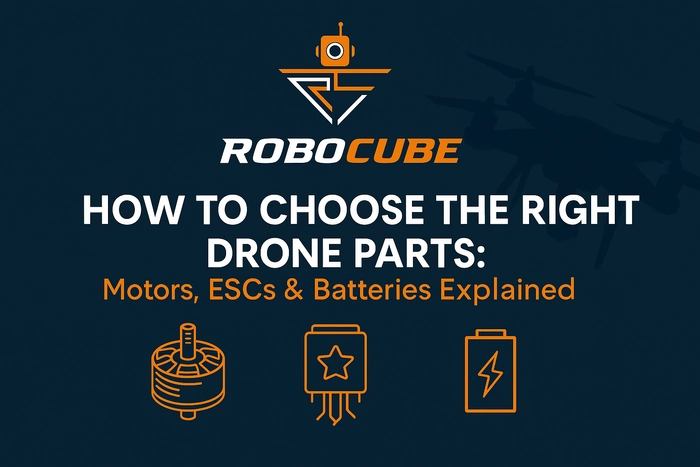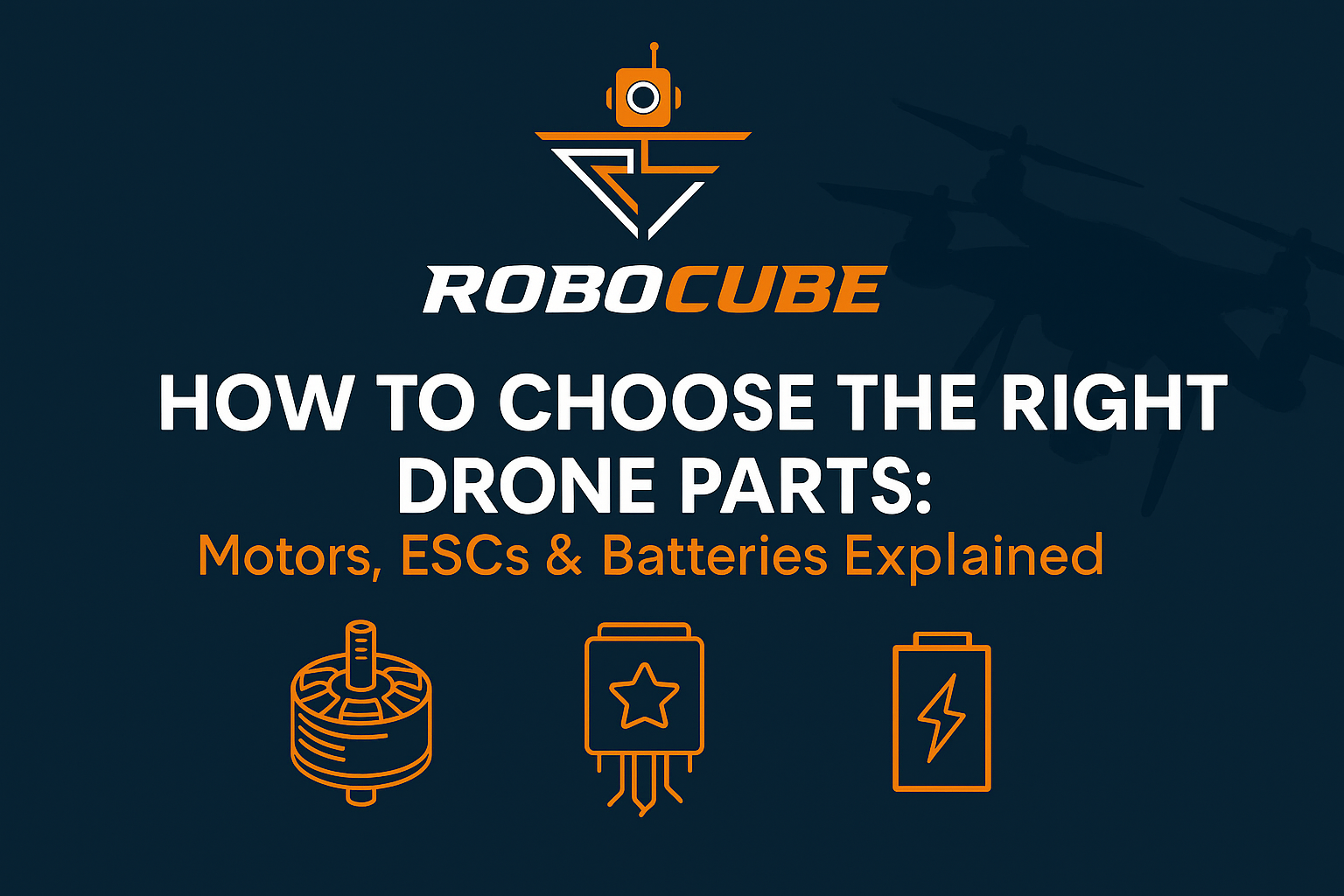Learn how to select the perfect drone motors, ESCs, and batteries for your UAV build—covering KV ratings, current handling, cell counts, and more—to maximize performance and flight time.
📋 Table of Contents
-
Introduction: Crafting Your Dream Drone
-
Motors 101: Finding Your “Perfect Spin”
-
2.1 KV Ratings & Thrust
-
2.2 Size, Weight & Efficiency
-
-
ESCs Demystified: Power Control in Your Hands
-
3.1 Current Rating & Headroom
-
3.2 Firmware, Protocols & Features
-
-
Batteries: The Heartbeat of Flight
-
4.1 Voltage & Cell Counts (S-Rating)
-
4.2 Capacity (mAh) & C-Rating
-
-
Component Matching: The Art of Balance
-
Reliability Hacks & Pro Tips
-
Conclusion: Ready for Takeoff!
-
Introduction: Crafting Your Dream Drone
Imagine your custom UAV soaring flawlessly, executing precise maneuvers, and delivering jaw-dropping performance. It all starts with nailing the right components. In this guide, we’ll transform the dizzying specs of drone motors, ESCs, and Li-Po batteries into clear, actionable choices—so you can spend less time second-guessing and more time flying sky-high.
how to choose drone parts, drone motors India, best drone ESC, drone battery guide, extend drone flight time -
Motors 101: Finding Your “Perfect Spin”
2.1 KV Ratings & Thrust-
KV Rating (RPM/V):
-
High-KV (≥2300 KV) motors rev up faster—ideal for nimble racing quads.
-
Low-KV (≤1200 KV) motors push heavier loads with torque—perfect for aerial photography and spraying kits.
-
-
Static Thrust Data:
-
Check thrust at your battery voltage. Need 2 kg lift per motor? Choose motors rated ~2.5 kg for a safety buffer.
2.2 Size, Weight & Efficiency
-
-
Stator Dimensions: A “2204” motor means 22 mm diameter × 4 mm height—bigger stators = more torque, more weight.
-
Efficiency (g/W): Seek > 5 g/W at cruise throttle for longer hover times.
-
Build Quality:
-
Japanese bearings + high-temp windings → durability
-
IP67-rated motors India resist dust & water for agricultural or outdoor missions.
best drone motors India, motor KV rating, drone motor efficiency
-
-
-
ESCs Demystified: Power Control in Your Hands
3.1 Current Rating & Headroom-
ESCs are rated by continuous current (e.g., 30 A, 40 A).
-
Rule of Thumb: Pick an ESC with ≥ 20 % headroom above your motor’s max draw.
-
Motor max = 25 A → use a 30–35 A ESC.
3.2 Firmware, Protocols & Features
-
-
BLHeli_32 / BLHeli_S: Smoother throttle, active braking, telemetry support.
-
Digital Protocols (DShot600/1200): Zero-latency commands vs. old-school PWM.
-
Cooling & Waterproofing:
-
Look for heat-sinks or copper pads.
-
Waterproof ESCs India (conformal-coated) for spray-drone reliability.
best ESC for drone India, BLHeli_32 ESC, waterproof ESCs
-
-
-
Batteries: The Heartbeat of Flight
4.1 Voltage & Cell Counts (S-Rating)-
4S (14.8 V) vs. 6S (22.2 V): More volts = higher RPM at the same KV, but ensure your ESC/motor support it.
4.2 Capacity (mAh) & C-Rating -
Capacity (mAh): Bigger packs = longer airtime, but added weight.
-
1500 mAh ≈ 8 min hover; 2200 mAh adds ~ 2–3 min.
-
-
C-Rating: How fast you can safely draw current.
-
Drawing 20 A from a 1500 mAh pack → need ≥ 13 C (20 A ÷ 1.5 Ah).
-
Always pick a pack with a 20–30 % C-buffer.
drone battery guide, extend drone flight time, best LiPo battery India
-
-
-
Component Matching: The Art of Balance
-
Calculate Total Thrust:
-
(Takeoff Weight) × 2.5 = Thrust Required
-
-
Select Motors:
-
Match each motor’s thrust rating to your per-motor quota.
-
-
Choose ESCs:
-
ESC current ≥ motor max current × 1.2
-
-
Pick Batteries:
-
Voltage ↔ Motor KV & prop combo
-
C-Rating covers peak draw
Pro Tip: Use online thrust calculators (e.g., eCalc) to simulate before you buy!
-
-
-
Reliability Hacks & Pro Tips
-
Soldering & Wiring: 12 AWG silicone wires + tidy joints = minimal voltage drop.
-
ESC Calibration: Sync throttle endpoints for seamless starts/stops.
-
Battery Care:
-
Store at ~ 3.8 V per cell
-
Cycle every 2–3 months
-
Retire bulging packs immediately
-
-
Firmware Updates: Keep ESCs & flight controllers current for peak performance.
-
-
Conclusion: Ready for Takeoff!
By mastering KV ratings, right-sizing ESCs, and optimizing battery specs, you’ll assemble a drone that’s powerful, efficient, and rock-solid in the air.Next Steps:
-
👉 Browse our Drone Motors & ESCs Collection at drone-parts
-
🤝 Contact our experts for custom component matching
-
Happy flying! 🛸🚀


